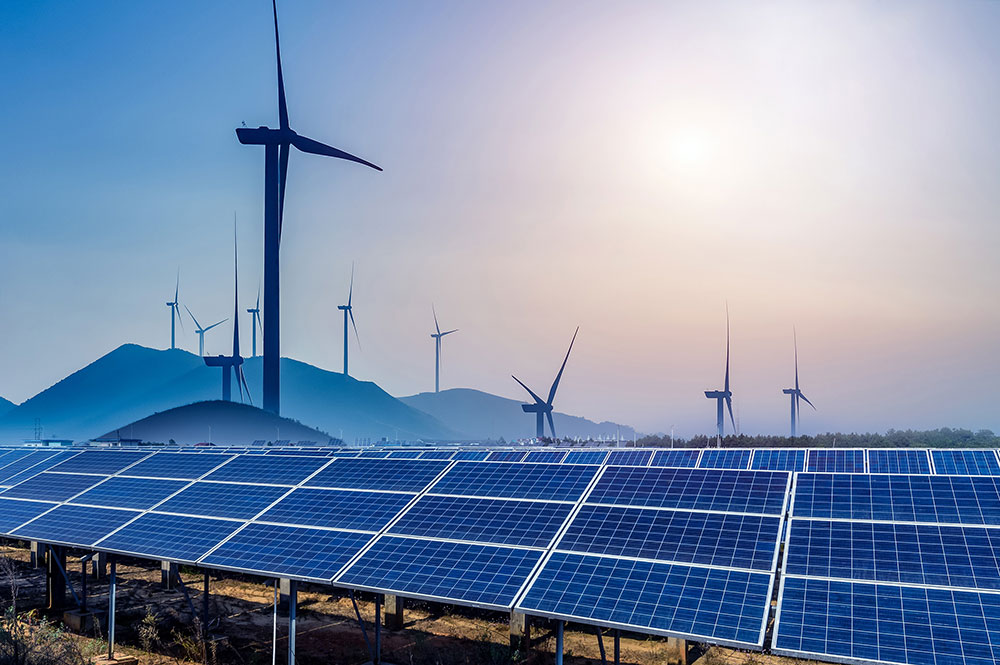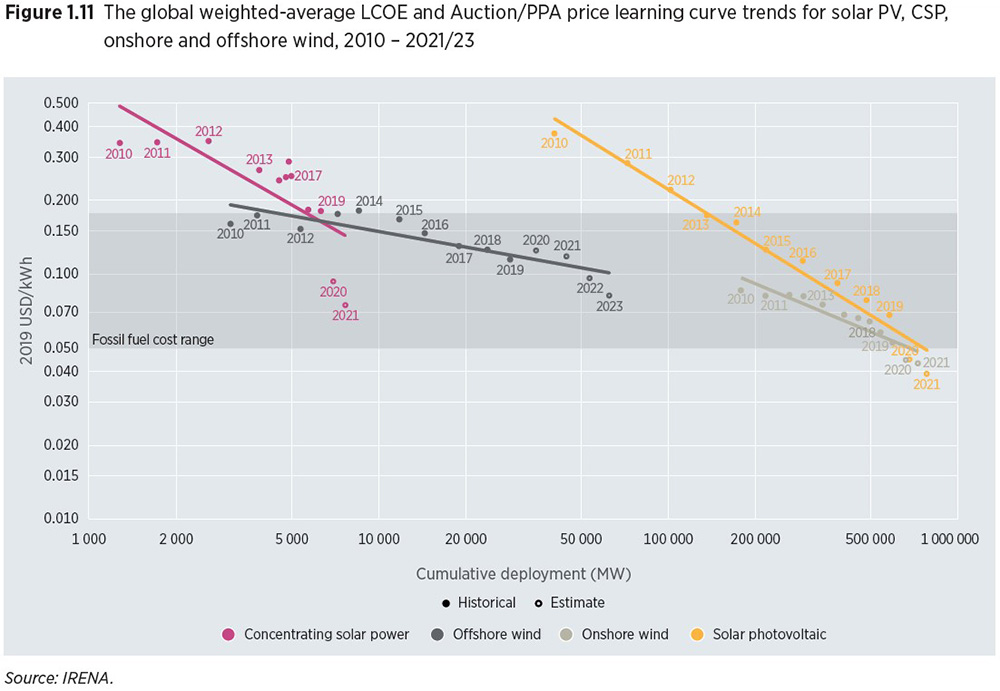
“New solar PV power stations and onshore wind farms are most likely to replace coal-fired power plants to a great extent within the next one to two years, thanks to the reduced costs that would become lower than the marginal costs of existing coal plants.”
The International Renewable Energy Agency (IRENA) has just released the latest report on Renewable Power Generation Costs, indicating that the cost of green power is falling at a faster rate than predicted, and it has become comparable with coal-fired power plants. If renewables can become one of the backbones restarting the national economies at this moment, it can achieve two goals at once – bring about a low-carbon future and increase job opportunities.
Declining costs of renewable energy is pushing close to coal floor price
The reasons for the declining green energy costs are generally due to the advancement and maturity of technologies, expansion of scale of economy, competitive industry chain, and accumulated experiences of developers. According to the data on Levelized Cost of Electricity (LCOE), the cost of solar energy for utility-scale had fallen by 82% in 2019, which can be described as a “steep reduction.” Its cost has reached USD0.068/kWh, pushing close to the cheapest fossil fuel cost. The cost of Concentrated Solar Power (CSP) ranks second, followed closely by onshore and offshore wind power.
On the contrary, the costs of hydropower, geothermal and bioenergy have fluctuated slightly. However, hydropower electricity remains very competitive. In 2019, the costs of close to 90% of the newly built hydropower generation capacities are lower than the cheapest newly built coal-fired plant. Geothermal power which has a higher capacity factor (normally between 60% to more than 90%), its costs is about USD0.073/kWh; in terms of bioenergy, the cost is at USD0.066/kWh. The cost can be much lower as long as “local” raw materials are acquired (for example: by-products from agriculture and forestry).
 Global LCOEs from newly commissioned utility-scale renewable power generation technologies, 2010-2019 (Grey colored background represents costs range for coal-fired energy) (Source: IRENA)
Global LCOEs from newly commissioned utility-scale renewable power generation technologies, 2010-2019 (Grey colored background represents costs range for coal-fired energy) (Source: IRENA)
Green Energy on the rise despite the COVID-19 pandemic
Based on the current green energy trends, IRENA predicts that before the end of next year, Solar PV and onshore wind will most likely replace coal to a great extent. This is because their costs will be lower than the marginal cost of existing coal-fired plant. The report further estimates that by replacing 500GW of inefficient coal-fired plants, it can reduce annual carbon emissions by around 1.8 gigatons (5% of last year’s global total). It would also lead to USD940 billion economic growth, the benefits are very impressive.
Furthermore, the performance of green energy during this COVID-19 pandemic is also worth mentioning. As the fossil fuel supply is greatly reduced due to the cease of work, green energy becomes supplementary, enabling hospitals to continue to provide its services and meeting the demands of learning and working from home, and online social. In addition, green energy helps to reduce air pollution. According to a study by Harvard University, the death rate from COVID-19 will increase by 8% for every 1μg/m3 increase in air pollution! Currently, more than 200 medical organizations have signed an open letter to the G20 leaders and their chief medical advisers, urging each country to consider the issues of air quality and climate at the same time, to ensure that public health and environmental issues are factored in when designing the green stimulus packages.
 It is estimated that solar PV and onshore wind power cost less than coal power generation by 2021 (Source: IRENA)
It is estimated that solar PV and onshore wind power cost less than coal power generation by 2021 (Source: IRENA)
References:
IRENA, Renewable Power Generation Costs in 2019
IEA, Global Energy Review 2020
Taiwan Environmental Information Center, “A Message to G20 Leaders, Calling for a Green Stimulus by Global Healthcare Workers”

















